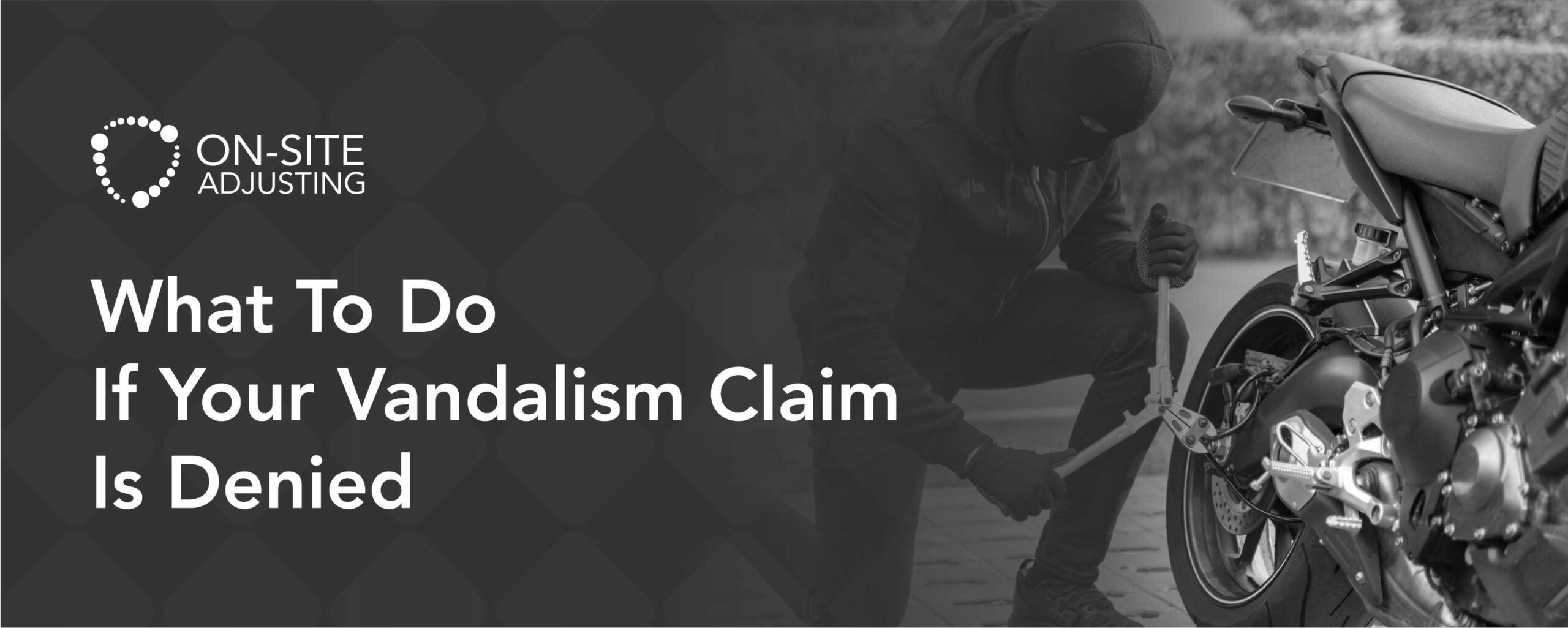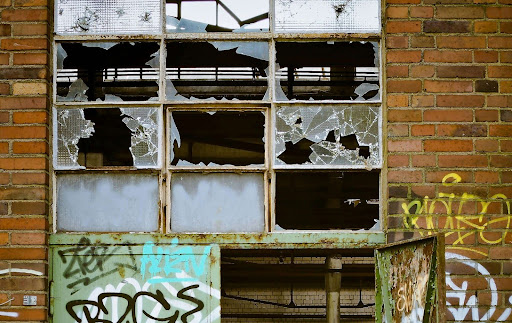
Property crimes are quite common in the United States with one taking place every 4.4 seconds. Vandalism is a type of property crime that can leave homeowners feeling violated and stressed. The situation becomes even more frustrating if your insurer denies your vandalism claim. One foolproof way to avoid getting denied claims is by hiring a public adjuster. Consult one before filing your claim for the best results.
It is crucial to understand how vandalism coverage works under regular homeowners’ insurance. In this post, we will also explain why your insurer might reject your claim and how to contest a denial. This guide will further provide you with tips on properly filing such claims.

Does Homeowners’ Insurance Cover Vandalism?
Regular homeowners insurance typically covers vandalism under the perils section of the policy. This means that if someone vandalizes your property, your insurance policy should cover the costs of repairs or replacements. Coverage usually extends to the structure of your home and personal belongings. Furthermore, your policy may cover detached structures like garages or sheds. For example, let’s say someone breaks your windows or spray-paints your walls. The policy would generally cover the cost of fixing or replacing damaged items.
However, it’s essential to review your policy’s specifics. This is because coverage limits, deductibles, and exclusions can vary. Understanding your coverage details can also help set your expectations when filing a vandalism claim. For instance, some policies may not cover vandalism if the property is unoccupied for a certain period. Nevertheless, you can usually expect your policy to cover your home’s structure, personal property, and sometimes, additional living expenses.
Common Reasons for Rejected Vandalism Claims
Even with coverage, insurance companies can still deny vandalism claims for various reasons. Understanding these reasons can help you avoid pitfalls. It will also ensure your insurer properly processes your claim.
Lack of Documentation
One of the primary reasons for a claim denial is insufficient documentation. You should provide adequate evidence of the vandalism, such as photos, videos, and police reports. Otherwise, the insurer might deny your claim. Insurers need clear and convincing proof to process a claim. Ensure you thoroughly document the damage as soon as you notice it. Include detailed photos from multiple angles and any relevant video footage. A good way to avoid documentation issues is by hiring a public adjuster.
Policy Exclusions
Every insurance policy has specific exclusions and conditions. If your policy excludes vandalism under certain circumstances, such as unoccupied properties, your claim will likely not go through. It’s crucial to understand these exclusions when purchasing your policy. Carefully read your policy documents to be aware of any conditions that might affect your coverage.
Late Filing
Insurance policies generally require you to file claims within a specific time frame after the incident occurs. If you file a claim outside of this period, the insurance company can deny it. Prompt reporting is necessary to validate the claim’s authenticity. It also helps to prevent further damage. Always report vandalism to your insurer as soon as you discover it. This will help you avoid complications related to late filing.
Suspicion of Fraud
If the insurance company suspects that you staged the vandalism, they will deny the claim. Indicators of fraud can include inconsistencies in your story, lack of evidence, or if the damage appears self-inflicted. Being honest and transparent with your insurer is incredibly important. Thorough documentation can further help mitigate suspicions of insurance fraud.
Lack of Maintenance
Negligence in property maintenance can also lead to a claim denial. For example, if a broken fence allowed vandals easy access to your property. The insurance company might argue that proper maintenance could have prevented the vandalism. They may see it as a failure on your part to mitigate risk. Regularly maintaining your property and addressing any vulnerabilities can help prevent vandalism. Furthermore, doing so will strengthen your claim.
How to Contest a Denied Vandalism Claim

If your insurer denies your vandalism claim, you have the right to contest the decision. Here’s how to go about it:
Hire a Public Adjuster
Hire a public adjuster to contest your denied claim. These professionals can provide expert guidance and represent your interests in negotiations. They also help you navigate the legal complexities of your case. However, it is best to hire a public adjuster at the beginning of your claim. This significantly reduces the chances of ending up with a denied claim.
Review the Denial Letter
The first step in contesting a denial is to thoroughly review the denial letter from your insurance company. This letter should explain the reasons for denial and reference specific policy provisions. Understanding the exact reason for denial will help you formulate an appropriate response.
Gather Evidence
Collect all relevant documentation to support your case. This includes photographs of the damage, police reports, witness statements, and any correspondence with the insurance company. Detailed and organized evidence can strengthen your appeal.
Contact Your Insurance Company
Initiate a conversation with your insurance company to discuss the denial. Request a detailed explanation and clarify any misunderstandings. Sometimes, providing additional information can lead to the reconsideration of your claim without needing to file an official appeal.
File an Appeal
If the informal discussion does not resolve the issue, you should formally appeal the decision. Write a detailed letter explaining why you believe they should cover your claim. Reference specific terms of your policy and include all supporting documentation. Ensure your letter is concise, factual, and professional.
Seek Mediation or Arbitration
If your appeal is unsuccessful, consider mediation or arbitration. These are less formal and often quicker and cheaper alternatives to going to court. They involve a neutral third party who can help resolve the dispute between you and the insurance company.
How to Properly File a Vandalism Claim

Filing a vandalism claim properly can increase the chances of approval. Follow these steps to ensure your claims process is smooth:
Hire a Public Adjuster
Public adjusters are masters of insurance claims. They build rapport with insurance companies and this ensures smooth claims processing. They also provide ease as they handle all aspects of your claim. This leaves you with time to heal from the emotional turmoil of the vandalism.
Document the Damage
As soon as you discover the vandalism, document the damage thoroughly. Take clear, detailed photos and videos from multiple angles. Comprehensive documentation helps substantiate your claim. Furthermore, it provides the insurer with a clear understanding of the extent of the damage.
Contact the Police
Report the vandalism to the police immediately and obtain a copy of the police report. Most insurance companies require this document when processing your claim. It serves as official verification of the incident and helps support your case.
Secure Your Property
Take steps to prevent further damage or loss. For example, if windows are broken, board them up to prevent weather damage or additional vandalism. Securing your property can also demonstrate to your insurer that you are taking reasonable steps to mitigate further risk.
Notify Your Insurance Company
Contact your insurance company promptly to report the vandalism. Provide all necessary details, including the date and time of the incident. Additionally, include a description of the damage. Prompt notification is crucial for the timely processing of your claim.
Fill Out Claim Forms
Complete any claim forms that your insurance company provides accurately and thoroughly. Include all requested information and also attach supporting documents. For example, attach the police report and photos. Inaccurate or incomplete forms can delay the processing of your claim.
Keep Records
Maintain a file of all correspondence with the insurance company. This should include emails, letters, and notes from phone calls. This documentation can be vital if you need to contest a denial. Keeping detailed records also shows your organization and seriousness about your claim.
Meet with the Insurance Adjuster
When the insurance adjuster visits your property to assess the damage, be present to answer questions and provide additional information. Ensure they see all the damage, and take your own notes during the visit. The insurance adjuster’s report plays a crucial role in determining the payout amount.
Conclusion
Vandalism can be a distressing experience and dealing with a denied claim worsens things. This is why you should put the information in this post to use. Learn your coverage and its limits. Be thorough with your filing and documentation. Furthermore, lean into professional help from a public adjuster. This increases your chances of a successful outcome. Lastly, don’t hesitate to appeal the decision if your insurer denies your claim.
Public adjusters abound but reputable public adjusters make all the difference in your claims process. On-Site Adjusting will treat your insurance claim with the professionalism it deserves. With our expertise, you too can experience a stress-free claim.












